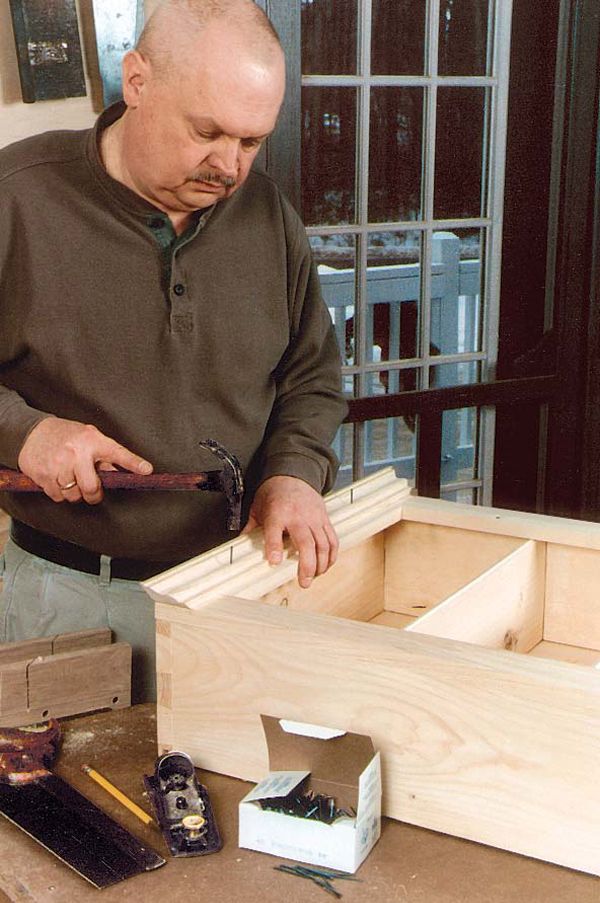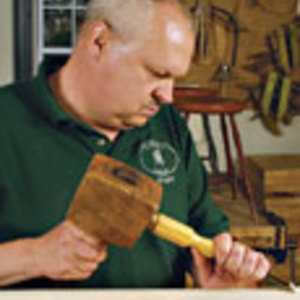Why Use Nails in Fine Furniture
They're the best fasteners to use for many applications
Synopsis: Nails have a bad reputation as a joinery method for fine furniture, one that woodworker Mike Dunbar feels is somewhat undeserved. While many folks think using nails is an indication of poor-quality construction, they do have a place in woodworking, such as when fastening back boards to chests and cupboards, keeping drawer bottoms in place and attaching moldings and other thin strips to furniture. Dunbar discusses types of nails and how to use them properly.
From Fine Woodworking #171
Visitors to my workshop appreciate that I make chairs without nails. They think that making furniture with nails is a sign of poor workmanship. While you wouldn’t want to join chairs with nails, they are the best fasteners to use for many other applications.
Nails have been around for thousands of years. Ancient Egyptians and Romans used them, as did every furniture-making culture since the dawn of woodworking. Despite this long and honorable history, nails have acquired a bad reputation.
Perhaps our association of nails with poor-quality construction dates back to a time when utilitarian furniture was often nailed together to avoid the high cost of making hand-cut joinery, which, of course, was more time-consuming. Nevertheless, large quantities of utilitarian furniture have survived years of hard use and abuse, proof that nailing does not necessarily equate with poor-quality construction.
Before the time of the Industrial Revolution, specialist blacksmiths, called naylors, hand-forged nails out of iron and produced specialized nails for furniture making. While some of these specialized nails have been superseded by other types of fasteners, many still exist and are used today.
These hand-forged nails, however, were expensive. By the end of the 18th century, inventors developed ways to mass-produce nails by shearing them from sheets of iron. These nails, known as cut nails, were still costly to produce. With the development of inexpensive soft steel in the late 19th century, wire nails rapidly took the place of iron nails. These wire nails commonly are found in today’s hardware stores and, like their earlier counterparts, have their place in fine furniture making.
Nails give a little when stressed. This characteristic usually makes them the best choice for securing cleats or runners that are applied across grain, situations where wood would split or glue eventually would fail because of the wood’s seasonal movement.
Nails generally do jobs that are difficult to accomplish with joinery. They fasten back boards to chests and cupboards and keep drawer bottoms in place.
Nailing still is the most common method of attaching moldings and other thin strips to a piece of furniture. Nails also are used to apply small ornamentation, such as brackets, where end grain or too little surface area prevents a good glue bond.
For the full article, download the PDF below.
Fine Woodworking Recommended Products

DeWalt 735X Planer

AnchorSeal Log and Lumber End-Grain Sealer

Estwing Dead-Blow Mallet























Log in or create an account to post a comment.
Sign up Log in